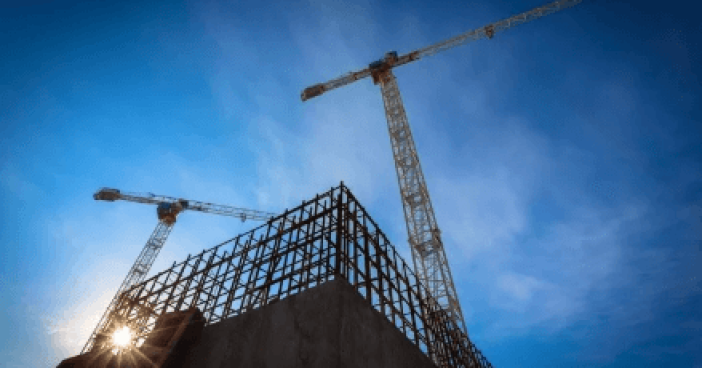Construction is one of humankind’s dirtiest practices, and makes green construction a challenging idea. Conservative estimates suggest construction is to blame for more than 4 percent of worldwide particulate emissions, which is a significant cause of changing climate and deteriorating air quality, as well as more water pollution incidents, which include those from the notoriously dirty oil industry.
Not only do we pollute some of our most precious natural resources — air, water, and soil — in the hopes of building taller, stronger structures; but also we alter natural landscapes in our desperate attempts to make more and more building materials. However, this need not be the case for long. By reimagining resources we have already consumed, we may be able to reduce the environmental impact of construction. Using the following sustainable building materials may help the industry ― and the Earth ― become more sustainable.
Organic Insulation
Efficient insulation is an essential step in building a tight envelope around a structure, which can reduce lifetime energy costs of a building between 30 and 60 percent. By keeping outside temperatures out and indoor temperatures in, insulation lessens the effort expended by HVAC systems. These are the most energy-consuming parts of most buildings. However, traditional insulation is dangerous to both the greater environment and individual living beings, as it is suffused with toxic chemicals and hazardous particles that can cause irreparable damage to health.
Fortunately, it seems that dozens of organic and recycled goods can easily be modified to become effective insulation. Here are some of the most interesting materials currently being developed into insulation:
- Neptune balls. A naturally occurring product of seaweed, Neptune balls are immune to rot, fire, and mold, and after being shaken into loose fibers, they are easily hand-packed into walls.
- Wool. Sheep live in some of the world’s harshest environments, so their outer coverings are made to withstand the worst weather. Plus, wool is excellent in moist environments, as it can absorb water without affecting its ability to insulate.
- Flax and hemp. Both flax and hemp fibers are incredibly strong, which makes them resistant to decay from mold, rot, and pests. Most companies add fire retardants, like soda, to this otherwise 100 percent natural insulation.
- Cork. The material more often seen in wine bottles and on bulletin boards is indeed one of the greenest insulations: it is quickly renewable, flame- and water-resistant, and its acoustic properties are incredibly valuable.
Recycled Wood
“Recycled wood” actually does not primarily come from trees. Instead, the wood is more appropriately labeled “plastic composite lumber,” as it is created from a 50/50 mixture of wood fibers and waste plastics, like plastic grocery bags. The resulting material is more durable than either wood or true plastic, and it is less toxic while being more resistant to mold and rot. Currently, composite lumber is slightly more expensive than traditional treated lumber. The benefits of using recycled building products prove to be more sustainable.
Recycled Steel
Americans throw away more iron and steel every year than any other material in municipal solid waste, with 10.5 million tons of steel ending up in landfills in 2018. Fortunately, about 510,000 tons of steel packaging is recycled every year, which allows the creation of recycled steel for use in building projects. Recycled steel is just as outstandingly durable as original steel, and it can be custom-ordered to fit any building project. In fact, when recycled steel is mixed or reinforced with recycled plastic fabric, builders have enough building materials for the ultimate green structures, fabric buildings, which are perfect for industrial companies looking for sustainable buildings.
Sustainable Bricks
Few people realize that clay bricks require intense amounts of energy to create. First, machinery must pull the clay from the ground, ruining countless natural environments; next, factories shape the material into bricks and burn it hard, consuming excessive amounts of energy to maintain hot ovens. Worst of all, bricks are surprisingly poor building materials: they are weak under any other force besides compression, and they are bad at insulating against heat, cold, and damp.
Instead, a number of sustainable materials may provide better safety during events like floods or earthquakes while increasing energy efficiency inside buildings. Here are some alternative bricks with promising properties:
- Wool bricks. Adding sheep’s fibers to bricks increases their strength dramatically, especially in cold, wet climates.
- Earth blocks. Essentially unfired bricks, earth blocks are clay, silt, sand, and concrete bonders that dry slowly, increasing their strength and size.
- Blood bricks. By mixing animal blood (which often goes to waste at major factory farms) with sand and some preservatives, builders can create strong, sustainable bricks equal in power to earth blocks.
- Glass bottles. Though likely impossible at larger scales, some homeowners are using glass bottles as substitute bricks for a funky, upcycled look and low cost.
ADEC ESG is an environmental consulting experience spans a wide array of development types, from mixed-use retail, industrial, commercial, residential subdivisions and planned communities, to transportation, schools, medical facilities, landfills, reservoirs and recycling facilities. With our extensive background and world-class expertise in back-office data processing, we provide professional advice, software solutions and legally-defensible products to ensure full regulatory compliance, reduced development costs and project sustainability. To learn more about how we can support your organization, contact our team today.




